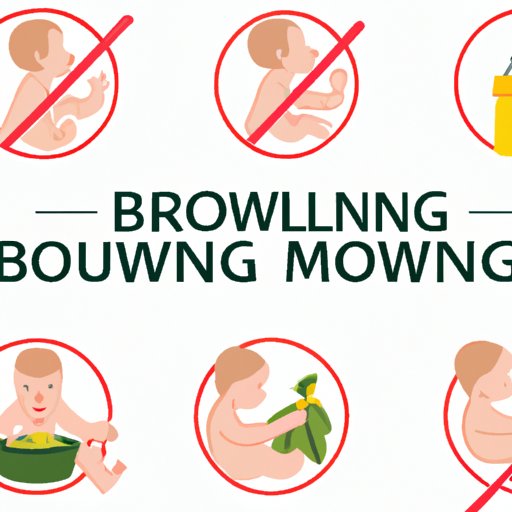I. Introduction
Stopping breastfeeding can be one of the most challenging decisions that a mother can make. Mothers may experience mixed emotions, such as guilt, sadness, or relief, during the process. Despite the challenges, it is essential to remember that stopping breastfeeding is a personal decision, and there’s no right or wrong way to do it. Whether you decide to stop breastfeeding immediately or gradually, the process can take some time. In this article, we’ve provided helpful tips on how to stop breastfeeding effectively, find support, and cope during the transition.
II. Gradual Weaning Technique
Gradual weaning involves slowly reducing the amount of breastfeeding over time. This technique is beneficial for both the mother and the baby. Gradual weaning ensures that the baby receives enough nutrition and helps the mother’s body adjust to the changing demands. To begin, start by substituting breast milk with other nutritious foods, such as baby formula or solid foods. Make small adjustments every few days by slowly increasing solid food intake and replacing a feed with either expressed milk using a bottle or cup. By taking it slow, your body will adjust, and you will start producing less milk. Plus, it will also lessen engorgement.
III. Cold Turkey
Cold turkey cessation means no breastfeeding with immediate effect. This method can be challenging for both the mother and the baby and can cause discomfort such as engorgement or plugged ducts. However, it is an option for mothers who prefer an abrupt ending to the breastfeeding relationship. Some mothers also opt for cold turkey cessation if their child is approaching their first birthday, and they feel it’s the right time to stop. If you opt for cold turkey cessation, make sure to have warm showers, apply cold compresses, and use a supportive nursing bra to alleviate engorgement.
IV. Self-Weaning
Self-weaning occurs when the baby gradually loses interest in breastfeeding, thus naturally reducing the demands for breast milk. This method is often the easiest for both mother and child if the child is ready to wean. Mothers can encourage self-weaning by offering their child other forms of nutrition, like introducing solid foods. Mother’s can also tell that their child is ready to wean if they’ve started biting, not latching properly, or are distracted while breastfeeding. Despite this, self-weaning can take some time and requires patience.
V. Find Support
It is vital for mothers to seek support from other mothers who have undergone the transition to stop breastfeeding. Joining a mother’s group or attending breastfeeding support groups can provide confidence and practical tips to mothers who may feel anxious or overwhelmed. In some cases, mothers may also require support from a certified lactation consultant or pediatrician who can provide medical advice on how to stop breastfeeding safely and effectively.
VI. Self-Care Routine
Stopping breastfeeding is an emotional experience for many mothers. It is essential to take time for yourself and recognize that the adjustment period may be challenging. It is also essential to eat a nutritious diet, stay hydrated, and get enough rest. Engaging in physical activities, such as yoga or meditation, can also help reduce anxiety and stress.
VII. Plan Ahead
It is vital to plan ahead and involve your partner, family, or caregivers in the weaning process. Advanced planning can ensure that the baby is well-fed and taken care of during the transition period. Mothers must discuss their plans and routines ahead of time to avoid any disruption or confusion to their child’s daily routine. It is also important to have access to necessary baby feeding accessories like bottles and nipples.
VIII. Benefits of Stopping Breastfeeding
Stopping breastfeeding can be a liberating experience for both the mother and the baby. For the mother, it can be more comfortable to plan simple activities like a dinner date or weekend getaway, while the baby can enjoy a wider range of healthy foods. Stopping breastfeeding can also allow women to take medications or undergo medical procedures which may not be compatible with breastfeeding. Additionally, the family can divide the feeding and childcare responsibilities, allowing other family members to bond with the baby.
IX. Conclusion
Stopping breastfeeding is an emotional decision for most mothers. It’s essential to choose the best technique that is suitable for both the mother and the baby. The tips outlined in this article, such as gradual weaning, immediate cessation, self-weaning, support, self-care, planning, and the benefits of stopping breastfeeding, can provide mothers with the best approach to stop breastfeeding. Finally, it’s crucial to acknowledge that each mother’s breastfeeding journey is unique to them and that support is available for assistance.
